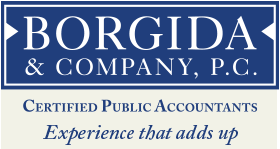Recently there has been a lot of noise about the top 1%. They certainly have taken a beating.
This was highlighted by the Occupy Wall Street Movement last year.
It has received significant attention during the Election.
There are several different ways to define the top 1%. In the interest of simplicity, we are saying its income over $400,000 per year.
Self-Made
Most of the people we work with are self-made. No trust fund baby’s here. Many of these folks started businesses. Through a lot of hard work and some breaks going their way, they have become very financially successful. We’ve watched (and helped) them grow, hire employees and serve their markets. The key common traits among these folks are:
- Honest
- Hard Working
- Smart
- Entrepreneurial
Many of them are very generous to their favorite charities. Oh, and they pay taxes too by the way.
Having clients like this to work with is really cool.
Target the Top 1%
Why has the top 1% suddenly become a target? I’m not sure. Envy perhaps? Maybe that they supposedly don’t pay their ‘fair share’ (whatever that is). Should they pay a higher capital gains tax rate after everyone reviewed Mitt Romney’s return? Sure. With the passage of the American Taxpayers Relief Act of 2012 the higher income earners face the hat trick of higher taxes.
For married couples filing jointly earning over $450,000 and singles earning over $400,000 they will be hit with (at least) three tax increases. The first is their ordinary income tax rate will increase from 35% to 39.6%. The second is their long-term capital gain tax will increase from 15% to 20%. Finally, their qualified dividends tax will also increase from 15% to 20%.
In addition to the capital gains tax increase and the ordinary income tax increase there are other tax increases scheduled.
The Affordable Care Act instituted a surtax of 3.8% on passive income above $250,000. So for the higher income earners they could be paying 23.8% (20% + 3.8%) on their long-term capital gains and qualified dividends.
I know the government needs the money. The deficits are a simple function of spending more than they are taking in. The government has shown absolutely no restraint when it comes to cutting spending.
It is estimated per IRS statistics that the top 1% declared about 20% of the taxable income and paid 37% of the taxes paid.
Do you work for the top 1%?
If so, what has been your experience?
Photo From Creative Commons



